For my first photoshoot I am going to go out and do some landscape photography of bunkers and fortifications created by Germans for use in the war. I am going to take these images from a few different bunkers from the west side and south side of the island. I am likely going to go out during the day, I may wait for sunlight, and use natural lighting techniques to get clear images of the bunkers. Using photographic archives such as Societe Jeriaise, I am going to likely try and use photographs of bunkers and fortifications from when they were built to show how the bunkers have changed over time as parts may have eroded and look older. This will help me create a simple story of change and remembrance in the bunkers throughout Jersey and its history.
All posts by Kristin F
Filters
Essay Plan
Essay question: How have artists such as Toroptsov shown memory and remembrance through their use of photography.
Opening quote: UNDECIDED – “I have no personal memories”
Introduction (250-500 words): What is your area study? Landscapes/Historical landmarks.
Which artists will you be analysing and why?
Yury Toroptsov as he links to both landscape work and memory/remembrance.
How will you be responding to their work and essay question?
Through using landscape photography to capture the idea of memory and remembrance of the war like he has with his father by photographing his home town.
Pg 1 (500 words): Historical/ theoretical context within art, photography and visual culture relevant to your area of study. Make links to art movements/ isms and some of the methods employed by critics and historian.
Going to try and begin with a modernist approach within my photography but may change it up as I go along.
May use archival images to show historical/theoretical context within my work.
Pg 2 (500 words): Analyse first artist/photographer in relation to your essay question. Present and evaluate your own images and responses.
Yury Toroptsov, focus on his “deleted scenes” project – about his father – links best to memory/remembrance, uses lots of landscape photography.
Pg 3 (500 words): Analyse second artist/photographer in relation to your essay question. Present and evaluate your own images and responses.
Chris Dorley-Brown and his book The Long Way Round – also about his parents, love during the war and after the war.
Conclusion (250-500 words): Draw parallels, explore differences/ similarities between artists/photographers and that of your own work that you have produced.
Refer back to each artists work, then compare it to how I have made mine and whether it truly represents the idea of memory and remembrance like theirs have.
Bibliography: List all relevant sources used:
Academic sources blogpost, will add them within the photobook essay.
Photography Decoded
“it is not just photography that is complicated, but the concepts of realism and reality too.” (Bright. S. and Van Erp. H. 2019; 18)
“we choose a portrait or landscape format. What often follows is the addition of non-realistic filters, editing, altering or cropping.” (Bright. S. and Van Erp. H. 2019; 18)
“photography has undergone a transformation, not only technologically but conceptually. Initially described as a means of capturing or freezing ‘real life’,” (Bright. S. and Van Erp. H. 2019; 18)
“if manipulation is the first thing someone thinks of in connection to photography, what does that say about the value of the photograph as a reflection of reality?” (Bright. S. and Van Erp. H. 2019; 17)
“what does a ‘real photograph’ even look like: Is it something you can hold? Is it something you can see on a screen and alter?” (Bright. S. and Van Erp. H. 2019; 17)
Artist Reference – yury Toroptsov
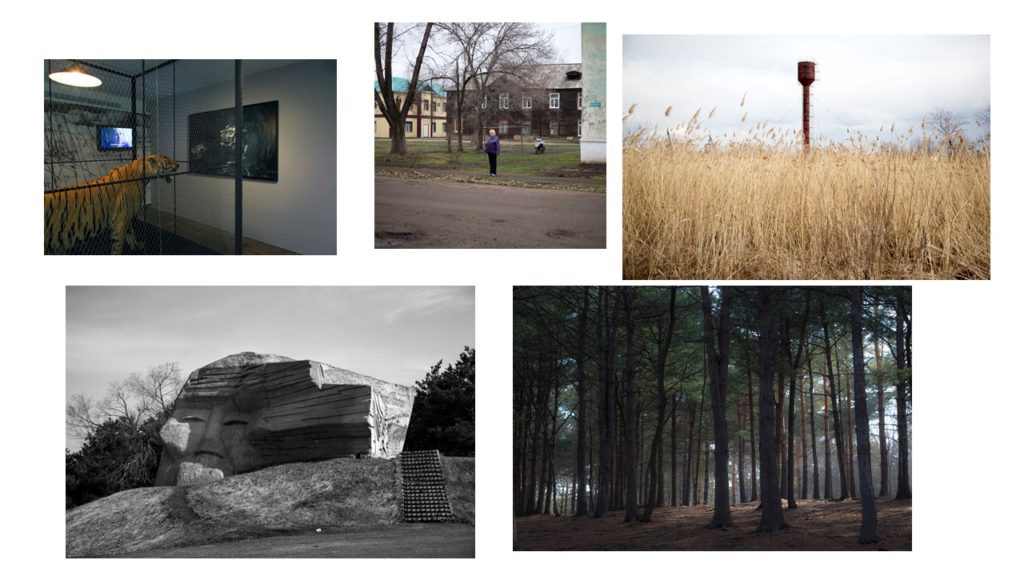
The images above are all from Yury Toroptsov’s project called “Deleted Scene”. Toroptsov took a lot of these images in Russia, where his father lived and died.
The image below is from one of Toroptsov’s books and is one of my favourite of his images.
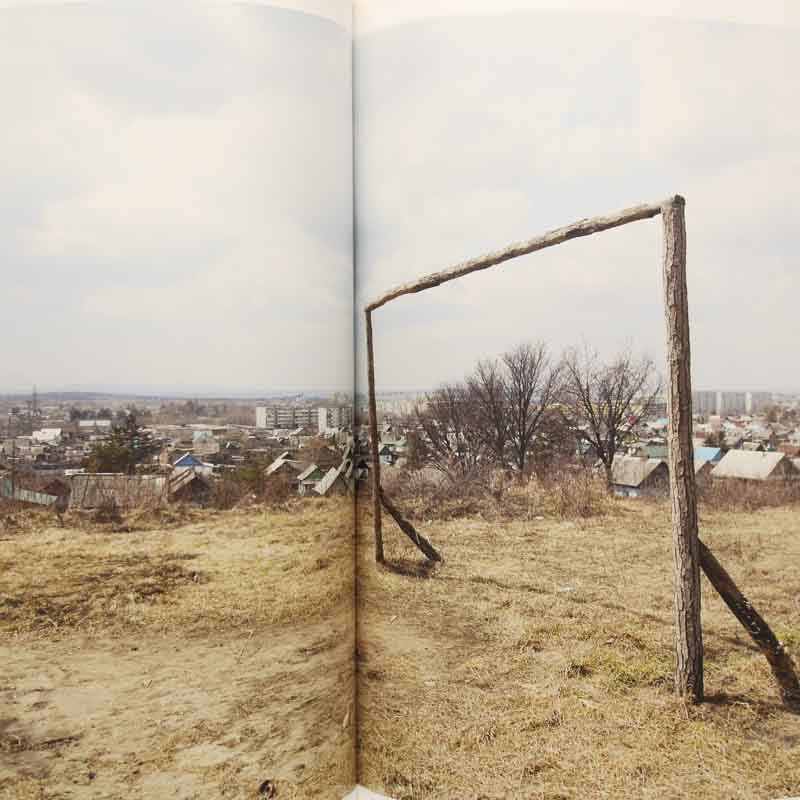
Technical: This image uses natural lighting, during the day time to create a natural looking image of lots of derelict housing. The image also shows lots of clouds above which creates a sad and dull atmosphere within the image.
Visual: The image is made up of a lot of brown and grey colours. These colours are used to show how broken-down and old this area is after years since he was there. It shows that the area has either become run-down or was always a very dull place to be.
The image also has this idea of space because it shows this 3D area behind the main aspect of the image (the wooden poles) with all these old and similar houses covering the landscape behind.
Contextual: This is apart of Toroptsov’s study on his home town in Russia. During this project he was trying to show areas he knows his father was to show that the memory of him. It shows an old run down area to show how old and derelict the area has become since he lived there.
Conceptual: The idea behind this work was to go back to areas his father had gone to show that him and his family remembers where they lived and how they lived through showing all the old buildings and broken down areas that they their family went to. This image shows how it may have aged and looks older over the years.
Essay Questions
Landscapes
Now and then
Artists – Toroptsov, Chris Dorley-Brown
How have artists such as Toroptsov shown memory and remembrance through their use of photography?
How have bunker landscapes changed over the years since the occupation?
Modernism
Modernism is a broad term that covers all the avant-garde art movements, and unites them under one name. These movements were; Fauvism, Primitivism, Expressionism, Cubism, Futurism, Dadaism and a lot of other different movements. Modernism was popularized in the very late 1800s and early 20th century and went on til later in the 20th century.
Modernism was taken on by a lot of artists during the early 19th century. Modernist imagery normally rejected the older art movements such as classicism and naturalism. It also normally rejected or ignored the idea of religion that was often used within older art movements. Instead of this a lot of the art is about social factors within the world and different things that were happening at the time, showing things such as peoples social classes.
Photography was a huge part of the popularization of modernism. Photography pre-modernism was often disregarded as not being a form of art. Though after modernism was introduced it was quickly became popular.
Pictorialism vs Realism
PICTORIALISM
Time period: 1880s – 1920s
Key characteristics/ conventions: often uses landscapes and figures within, influenced by allegorical imagery
Artists associated: Julia Margaret Cameron (1815-1879)
Sally Mann
The Vienna Camera Club (Austria) – Hans Watcek, Heinrich Kuhn, Hugo Henneberg
The Brotherhood of the Linked Ring (London) –
Photo-Secession (New York) – Frank Eugene, Gertrude Kasebier, F Holland Day, Clarence H White
Methods/ techniques/ processes: vaseline on lenses to make it not sharp, manipulate images (mimic artwork)
REALISM / STRAIGHT PHOTOGRAPHY
Time period: Late 1800s and the early 1900s
Key characteristics/ conventions: Shows images of peoples lives to show poor/helpless/homeless normally
Artists associated: Walker Evans (1903-75)
Methods/ techniques/ processes: Social reform photography (imagery of poor/homeless) used to help people within the images
Still-life Photoshoot 2
I have used the studio again to create more images of world war two objects. These images I have taken differently to the images previously, instead using coloured backgrounds and and coloured paper underneath the objects. I have done this to add more colour into the work and show these objects on a different background other than a white-reflective surface. Below are my favourite images from the shoot.


Still-life Photoshoot
I have used the studio to create a selection of imagery using a camera and objects to do with occupation and liberation. For this photoshoot I have used two different lights on the objects. One of these lights was on and I used a diffusing light so that the objects shadow created from the light was minimized while keeping the object looking as though the light was still coming mostly from one side.Below are a selection of the best images I have taken using this method.
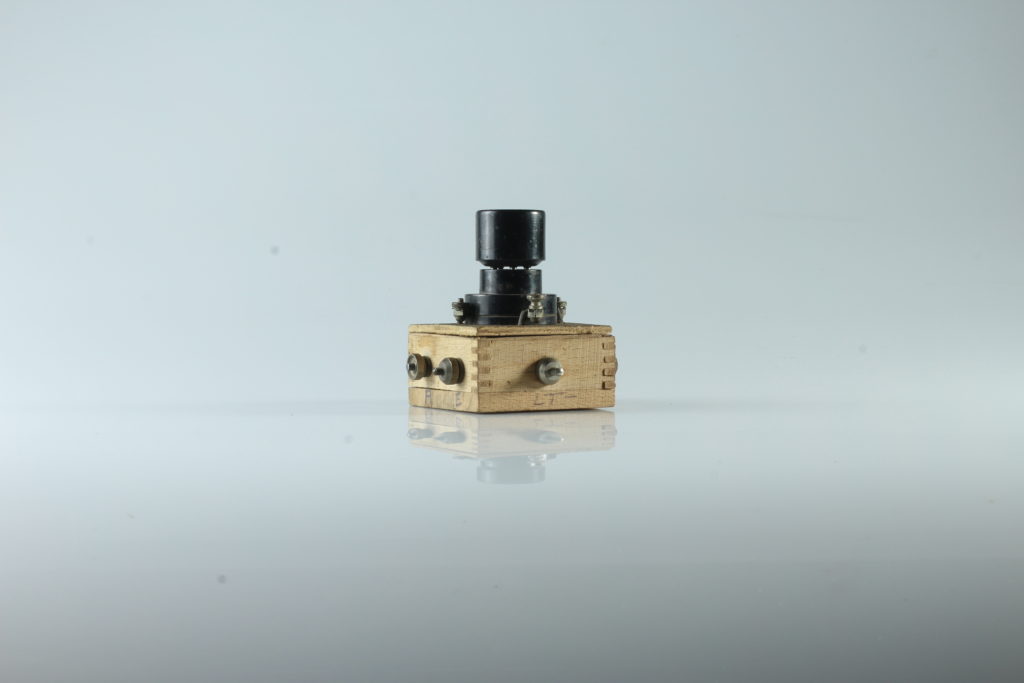

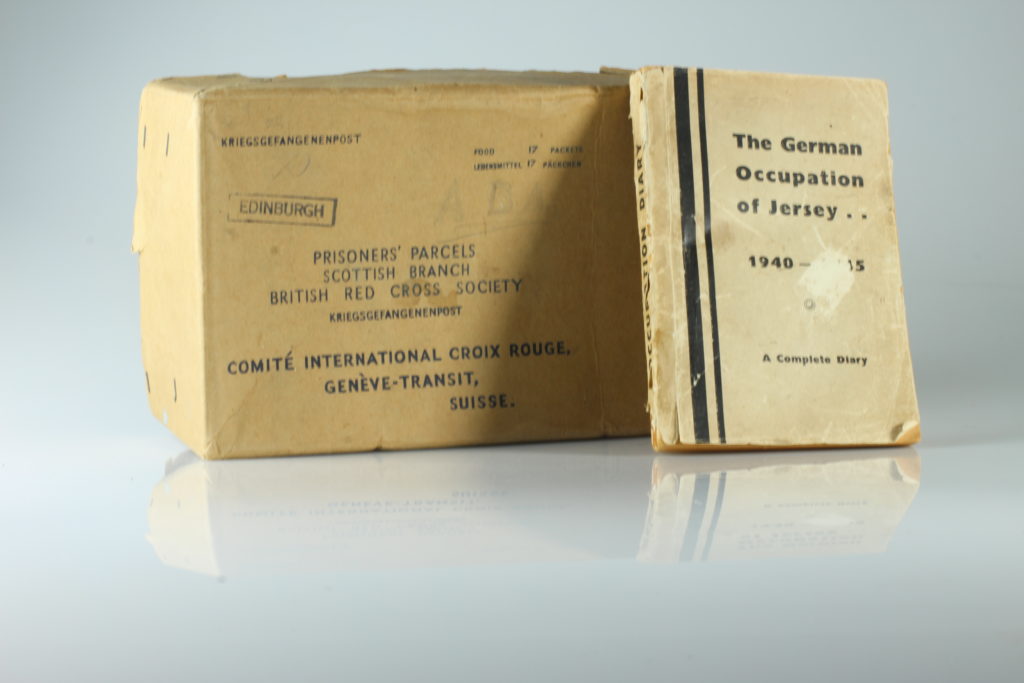
Mindmap / Moodboard
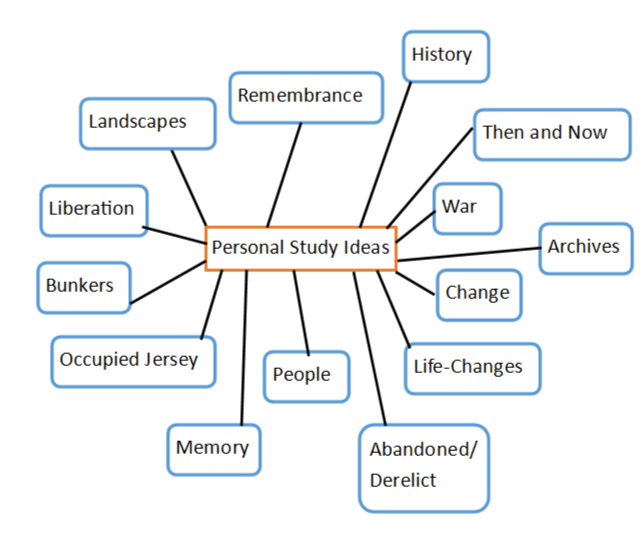
Above are some of the ideas I am going to look into when going through my personal study. I am going to use a lot of these ideas to create different photo shoots. From these things I am mostly going to focus on landscapes and bunker photography throughout my shoots.
Below are some images that I may use from various artists as inspiration for my photo shoots. These artists often link their work to family and memory, which could help me link my work back to occupation and liberation.

